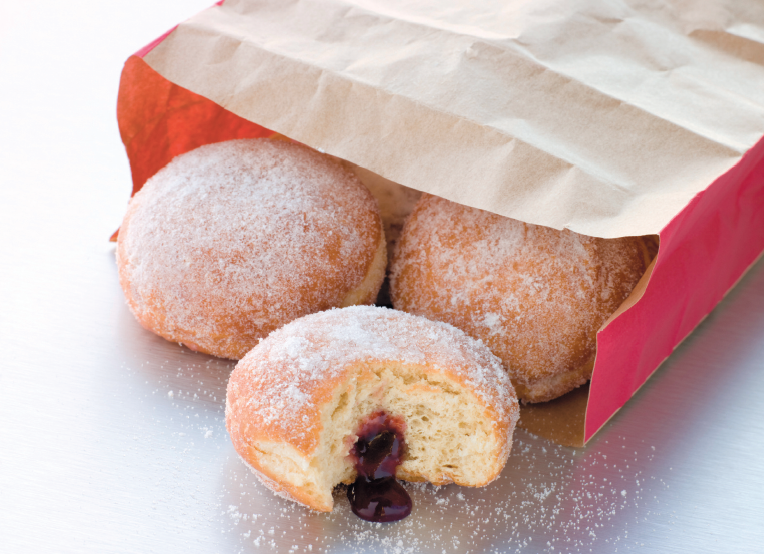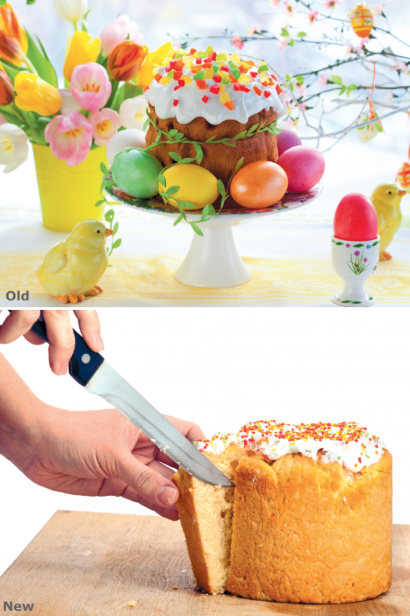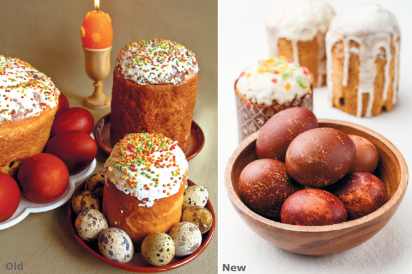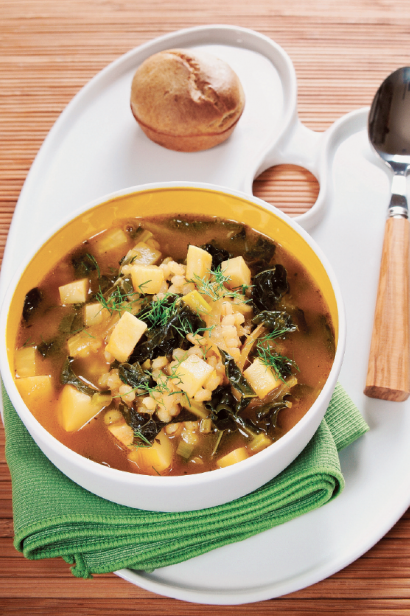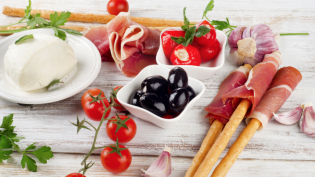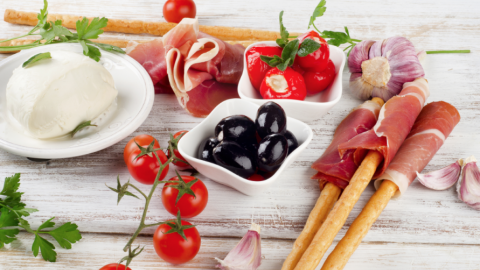Modern Food Styling & Food Stylist Tricks of the Trade
Recently, I was looking through some old Grande Diplome Cooking Course magazines from 1971. The photos struck me as flat and lifeless, making the food look bland and uninteresting – although I probably was intrigued back in the '70s, because this was the way food was styled back then. The whole point of food styling is to entice me to run out to the supermarket to buy a particular product or to gather up my mise en place and start cooking, and those old photos just don't do that for me any more.
They did, however, start me thinking about how food is depicted in print, on TV and even in the movies, and how photos of food affect me. I often read through cookbooks, looking at the photos to help me decide which recipe to try. I've even purchased some cookbooks because of the photos – Donna Hay's come to mind. I've never actually cooked anything from her books but I enjoy looking through them as though they were art books.
It's true that what looked good in 1971 doesn't look that appetizing in 2014. Partly it's because what we eat has changed, but even more it is how the food is styled that has changed.
Modern food stylists come to the profession from many other careers, bringing with them a variety of skills. You don't have to be a chef to style food but you certainly do have to understand food and how it "behaves." For example, ice cream is one of those foods that can be difficult to style especially if the shooting time is long. We all know that ice cream will melt if the room is warm. But a food stylist knows how it will melt, the shapes that will emerge and if it's even a good idea to use real ice cream in a photo shoot. (Food stylists do have concoctions, many of them proprietary, they can whip up to mimic ice cream for a photo shoot and they do occasionally use ersatz food and props, but these days real food is almost always used.)
Local food stylist Diana Draper was an art director at an advertising agency before she took her knowledge of color, space and light into food styling.
Draper is very much into realistic photos. "Let's say I have to style for a donut photo. I try to envision someone sitting at the dining table, reading the mail, eating a donut. How would she put the donut down on the plate? Would there be crumbs? A bite taken out?"
Certainly we still see food styling that is artistic to the extreme in some magazines and cookbooks but more often what we are seeing is more "casual" styling, much like the more casual plating of modern restaurant food.
"In the past, making food look perfect was what was expected but the trend is to make the food look 'lived in' by placing crumbs and props around that suggest that people were just there eating the food," says Draper.
Ellen Straine, another local food stylist, likes to "showcase the beauty of real food, such as fresh vegetables and herbs from my garden, cookies right out of the oven, etc."
"Food styling has changed quite a bit since photography moved into the digital age," says Straine. "Food doesn't have to stay fresh as long on the set, we don't have to wait until the film is developed to see the photo and photographing food that isn't quite perfect is more acceptable now than in the past."
You can't always tell by looking with the naked eye how something will look when photographed. Just as photos of people may have them looking thinner or younger than in real life, or the red in the shirt you thought was perfect for a family photo ends up looking pink, food may photograph in a way that is more appetizing or less so than in real life. That's one of the ways that digital photography has stepped up the food stylists' game. A photographer can now view the just-taken shot to see if the lighting is right, if the food is placed well on the dish, if the color is good, etc.
Local cookbook author, Michelle Dudash (previously profiled in this magazine) worked with local food stylist Stephanie Green for her book Clean Eating for Busy Families.
Michelle had already visited Stephanie's studio, knew her work and was totally comfortable with allowing Stephanie and her photographer husband, Dwayne, to plan the photos for her cookbook with little input from her.
Stephanie, a chef before she became a food stylist, tries to be "true to the food" because she doesn't want to stray so far from what is real that the home cook can't reproduce it or at least get close.
When Michelle was conceptualizing the recipes for her book, she kept in mind that "people eat with their eyes first" so she made certain to use many colorful ingredients, especially greens and reds.
"If the initial draft of a recipe would result in an all-brown dish, I would think of a few ingredients to add that bring vibrant color to it and also improve the flavor profile."
Michelle says, "I have learned over the years that it is difficult to make a brown stew look really exciting. Stephanie made my Winter Vegetable Barley Stew pop by sprinkling fresh green fennel leaves on top of the stew and using a bowl with a bright yellow interior and white exterior. Then she added interest with a springy green napkin and textured bamboo placemat."
Harriett Granthen, a home economist by training, has been working as a food stylist since the 1980s. She learned the power of well-presented food when she was demonstrating recipes for the microwave. For those who can remember back then, food cooked in the microwave could be less than appealing, so all of Granthen's ingenuity and talent were needed in order to show appetizing microwaved food.
According to Granthen, the business of food styling has changed a lot through the years. While much of her business was once print, she now does food styling for television commercials and food company websites as well.
At one time, the perfect cake on a perfect cake stand was the norm. Granthen says that now you see a cake that is cut into with the knife nearby. "The trend is to action-driven styling. The food should look like it's for eating and not for display."
Arizona food stylist Kim Krejca agrees. "The evolution in food styling is tremendous. In the past, the food almost didn't look real. Now it's messy and organic." Food styling today is usually less fussy and so much more realistic and natural.
So nowadays when you see a photo of a dish that looks good enough to eat, it usually is.
Food Stylist Tricks of the Trade
Most food stylists have a kit of essential tools they carry with them including cotton swabs to absorb liquid, tweezers and dental instruments to move food around, glass cleaner, scissors, heat gun to help brown the skin of poultry, barbecue grill plug-in coal heater to use for making grill marks on meat, proprietary solutions that can be sprayed on to enhance the food, glycerin to make the condensation drips you see on glasses.


